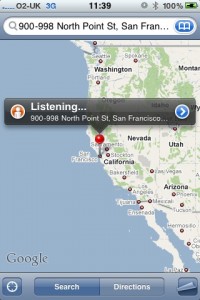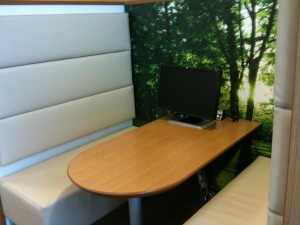2009 saw us deep in the grips of a recession with doom and gloom at every corner but 2009 also represented one of the most ‘entrepreneurial’ years since 2000. Northern Ireland is not Silicon Valley. We don’t have the climate, we don’t have the architecture and we don’t have the big names. The average Venture … Continue reading “The State of Funding in 2009 in Northern Ireland”
2009 saw us deep in the grips of a recession with doom and gloom at every corner but 2009 also represented one of the most ‘entrepreneurial’ years since 2000.
Northern Ireland is not Silicon Valley. We don’t have the climate, we don’t have the architecture and we don’t have the big names. The average Venture Capitalist in Silicon Valley can probably fill his term sheet 5 times over by just selecting startups within a 20 mile radius of his office.
So, where could we get investment in 2009?
The most obvious place that people first turn to is InvestNI. They’re the Regional Development Agency for Northern Ireland and they advertise heavily, encouraging people to ‘Go For It” and start their own business. InvestNI offers several programmes which may be of interest:
- GAP – the Growth Accelerator Programme provides relief on vouched and approved expenditure providing up to 50% of your investment back. If your expenditure is likely to be less than £5000, then you’re going to spend a relatively large amount of time filling in forms and vouching for a maximum of £2500 (because InvestNI will attempt to argue down from the peak of 50% return). If you’re spending £20000, then it makes a lot more sense. It’s a simple, accessible programme with a very boring form.
- Grant for R&D – a little more limited though the amounts can be potentially higher. I’ve not seen much evidence that this is really that accessible but I’m sure that’s just due to my exposure than any difficulty. The problem I foresee for companies I work with is that defining software development as ‘R&D’ is hard.
- Trade and Export – this process is very accessible and is a short form as well. It enables a small group of companies to attend trade shows and conferences around the world and gives them around 50% of the money back once they return. Usually there’s also some facilitation when you get out there from the InvestNI teams. InvestNI should do more of this – these guys are great.
- Other programmes? I hear that there’s a heap of programmes like SFA? Management Assistance? but I have so far failed to find someone who can really tell me more about it!
InvestNI also has the NISPO fund which is managed by e-Synergy. This support includes a £5 million venture capital fund, the Invest Growth Fund, which focuses on seed and early stage businesses with high growth potential and a £3 million proof of concept fund, the Invest Growth Proof of Concept Fund, which is funded by Invest NI to provide funding to very early, non-university projects. All of this money is either match funded or vouched so, like with all public funding, to achieve this you’ll need some sort of other private money behind you. The fund opened in July 2009 and has invested in two local companies: Sonic Academy and Anaeko.
Continuing with the public sector funding, there’s a potential for also getting funding from NIScreen or the Arts Council.
NIScreen has a Digital Media Fund for content (not the enabling technology) and media projects funded must have 60% moving image. This fund is currently closed (and has been closed since around September 2009). It’s pretty accessible for companies making digital films or games though NIScreen admits that they’re only really getting started in the Digital Content sector.
The Arts Council will have spent the £5 million Creative Industries Innovation Fund by March 2010 and the last trenche (from Sept/Oct) is likely to have been the last of the money. This was a seed fund specifically to embrace innovation and the arts including software, games, film, television. There was a lot of money from this fund spent on ‘startup costs’ which I think is a poor use when they could be much more specific. The funds available were between £10000 and £50000 and were certainly earmarked (on paper) for innovation. The Arts Council has a raft of other support for arts-related projects so there’s bound to be some opportunity there for some.
There’s a funding-like service offered by InvestNI called “Innovation Vouchers” which buys you £4000 worth of University research time. This has been misused in the past to get normal development done and realistically £4000 is not going to buy you very much but it’s an option for people who have ideas and who cannot build it themselves.
I’m not aware of other public sector funding which would be applicable to the Digital Content and Software Sector.
There are private sources of funding as well. The first is the three Fs. Friends, Family and Fools. Anyone you can hoodwink into giving you startup money because they trust you is likely going to be a better bet than anything. As you can match private money with public in the schemes above, it helps your buck go that little bit further. But you’re talking about friends and family. I would hope that people put more care into this than anything.
Getting a loan from the bank to finance your business is also possible in theory though I don’t have much experience of getting this. Actually – I do – but the experience was so painful that I cannot recommend it. I ended up paying exorbitant amounts of interest on a £15000 loan which very nearly put us out of business. If I could encourage you of one thing – it’s not to go to the banks. If a bank manager wants to talk to someone or offer up some time to talk to a group of entrepreneurs, then I’m very willing to hear them. As long as they’re not from the First Trust Bank in Lisburn.
Angel Investment is another option. Angels are private individuals who have personal wealth which they can invest in other businesses with the intention of increasing their investment or getting a chunk of money back when the business is sold. As a rule they’re not doing it for anything other than the money (though several have said to me they’re doing it because it stops them rotting their liver at the 19th Hole). According to Venturehacks, an Angel is someone who has capital, has good judgement and who also has ‘proprietary deal flow’; they’ve got something other than money behind them. They can provide something than no-one else can or they have an exclusivity to their investments which helps them maintain their name.
Halo NI, the only Angel Network I’m aware of in Belfast. I know they have facilitated investments over the last year
And finally, we have Venture Capital. I’ve not seen any of this in action but I know it exists with apparently some £20 million in play in Northern Ireland (a very small amount compared to other regions) and apparently most of it is already invested. I’d welcome comment about the NI Venture Capital Markets.
There are other options out there and I’m working with some organisations out there to see if we can improve the situation for local entrepreneurs and company founders in accessing private finance for their startups. I’d welcome your input.







